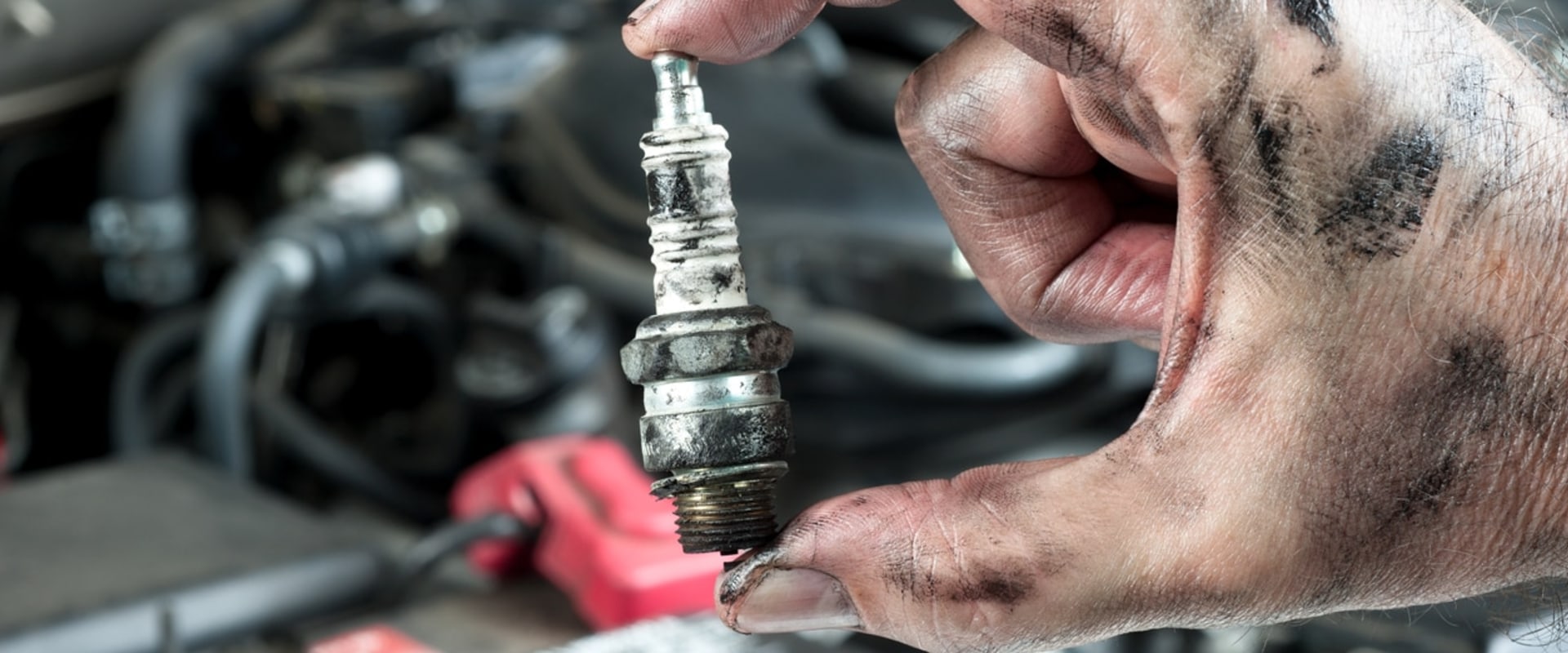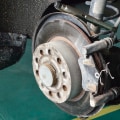Are you looking for The Essential Motorcycle Ride Packing List to ensure a smooth and enjoyable journey? You've come to the right place. In this article, you'll find out everything you need to know about spark plug replacements, from what they are to how to do the job yourself. You'll also learn why it's important to replace your spark plugs regularly, and what type of spark plug is best for your motorcycle. So read on, and get your spark plug replacements done right! The Essential Motorcycle Ride Packing List includes all the necessary items for a successful ride, including spark plugs as a crucial component of any motorcycle engine. They are responsible for igniting the fuel-air mixture inside the combustion chamber, allowing the engine to run properly.
Without properly working spark plugs, your motorcycle won't be able to start or run correctly. There are a few different types of spark plugs available on the market. The two most common types are standard spark plugs and high performance spark plugs. Standard spark plugs offer basic performance and are a good choice for everyday riders.
High performance spark plugs offer improved performance and are best for those who are looking for increased power and acceleration. Identifying when it's time to replace your spark plugs is important in order to keep your motorcycle running smoothly. Spark plugs should be replaced every 12,000-15,000 miles or once a year, whichever comes first. To check if your spark plugs need to be replaced, use an ohmmeter to measure the resistance in each one.
If the resistance is too high, then it's time to replace them. In order to replace your spark plugs, you'll need several parts and tools including new spark plugs, a socket wrench set, a spark plug gap tool, and anti-seize lubricant. The socket wrench set will help you remove the old spark plugs from the engine while the spark plug gap tool will help you adjust the size of the gap between the electrodes of the new spark plugs. The anti-seize lubricant should be used to lubricate the threads of the new spark plugs before installing them into the engine. When replacing your spark plugs, it's important that you follow a few simple steps to ensure that they are installed correctly and safely.
First, use the socket wrench set to remove the old spark plugs from the engine. Then, use a wire brush to clean any debris from the threads of the spark plug holes. Once cleaned, use the spark plug gap tool to adjust the gap size on each of the new spark plugs. Finally, apply some anti-seize lubricant to each of the threads before installing them into the engine.
Common mistakes people make when replacing their spark plugs include not using anti-seize lubricant on the threads and not setting the gap size correctly. Both of these things can lead to problems with your engine not starting or running correctly. To avoid these issues, always use anti-seize lubricant when installing new spark plugs and make sure that you set the gap size correctly using a spark plug gap tool. When it comes to maintaining your spark plugs, there are a few best practices that you should follow.
First, always use high quality spark plugs that are designed for your specific motorcycle engine. Second, make sure that you replace your spark plugs regularly according to manufacturer recommendations. Finally, check your spark plug gap regularly and adjust it as necessary. If you ever have any issues with your spark plugs, there are a few troubleshooting tips that can help you diagnose and fix them. First, check all of your connections and make sure that everything is properly connected and secure.
Second, check for any damage or wear on your spark plugs and replace them if necessary. Finally, if all else fails, take your motorcycle to a professional mechanic for further diagnosis and repair.
Troubleshooting Any Issues With Your Spark Plugs
The first step in troubleshooting any issues with your spark plugs is to inspect them. Look for signs of wear or damage on the surface, such as cracks or chips. If you find any, replace the spark plug immediately.It's also important to check the gap between the electrodes. This gap should be between .028 and .032 inches. If it is too wide or too narrow, adjust it accordingly. If you're still having issues with your spark plugs, check the ignition system.
Make sure all of the connections are secure and that the wires are in good condition. You should also check the voltage output of the ignition coil and make sure it is within the manufacturer's recommended range. Finally, check the air filter and fuel filter. If these are dirty or clogged, they may be preventing your spark plugs from firing correctly.
Clean or replace the filters as needed to ensure optimal performance.
Best Practices For Maintaining Your Spark Plugs
Maintaining your spark plugs is essential to keeping your motorcycle running properly. The best way to do this is to follow a few simple steps. First, make sure to inspect your spark plugs regularly and check for any signs of wear or damage. If you notice any issues, replace the spark plugs as soon as possible.Second, use the right type of spark plug for your motorcycle. Make sure that the size and heat range are compatible with your engine. Third, use a spark plug cleaner and wire brush to remove any dirt or debris from the spark plugs before installing them. When it comes to replacing your spark plugs, it's important to use the right tools and parts. Make sure that you have the correct size and heat range for your engine.
Also, use a torque wrench to ensure that the spark plugs are tightened correctly and that they are securely fastened. Finally, be sure to follow the manufacturer's instructions when installing the spark plugs. By following these simple steps, you can keep your spark plugs in good working order and ensure that your motorcycle runs properly. Additionally, regular maintenance and replacement of your spark plugs will help to improve your motorcycle's performance and extend its lifespan.
Parts & Tools Needed For Spark Plug Replacement
Replacing spark plugs in a motorcycle requires certain parts and tools. To replace your spark plugs, you'll need a spark plug socket, a ratchet, spark plug gap gauge, wire brush, feeler gauge, and a torque wrench.The spark plug socket is a specialized tool designed to fit snugly over the spark plug and remove it from the engine. The ratchet is used to remove the spark plug from the socket. The spark plug gap gauge is used to measure the gap between the electrodes on the spark plug. The wire brush is used for cleaning any debris from the spark plug's threads.
A feeler gauge is a thin metal blade that is used to measure the gap between the electrodes. Finally, a torque wrench is used to tighten the spark plug to the correct torque. When replacing your spark plugs, make sure you use the correct socket size for your specific motorcycle model. It's also important to use the correct gap setting for your engine. If you don't have a feeler gauge, you can measure the gap with a standard ruler or caliper.
Types of Spark Plugs
Spark Plugs come in a variety of shapes, sizes, and materials.The type of spark plug you use will depend on the make and model of your motorcycle, as well as the performance you want from it. The most common types of spark plugs are standard plugs, resistor plugs, double-platinum plugs, and iridium plugs. Standard spark plugs are the most affordable type of plug and are made of copper or nickel alloy. They don’t last as long as other types of spark plugs, but they do provide good performance.
Resistor spark plugs are designed to reduce the amount of electrical interference that can be caused by the spark plug’s firing. Double-platinum spark plugs are more durable than standard spark plugs and have a longer lifespan. They are more expensive than standard spark plugs, but they offer better performance and fuel efficiency. Iridium spark plugs are the most expensive type of plug, but they offer the best performance and durability. Each type of spark plug has its own advantages and disadvantages.
Standard spark plugs are generally the least expensive and most reliable option, while double-platinum and iridium spark plugs provide better performance but cost more. Resistor spark plugs reduce electrical interference but can reduce engine power output. Choosing the right type of spark plug for your motorcycle will depend on your budget and your needs.
Identifying When It's Time To Replace Your Spark Plugs
Knowing when to replace your spark plugs is important for maintaining a healthy motorcycle engine. There are a few telltale signs that it may be time to replace your spark plugs.Spark Plug ConditionOne of the easiest ways to identify if your spark plugs need replacing is to inspect them. You can do this by removing the spark plugs from the engine and inspecting them for any signs of damage or wear. If you see any signs of corrosion, cracking, or discoloration, it's time to replace them.
Engine Performance
Another way to tell if it's time to replace your spark plugs is to pay attention to how your engine is running.If you notice any issues with starting your motorcycle, or if it seems to be running rough or lacking power, it could be a sign that your spark plugs need replacing.
Mileage
Lastly, it's important to keep an eye on how many miles you've put on your motorcycle since you last replaced your spark plugs. Depending on the type of spark plug and the type of motorcycle you have, you may need to replace them every few thousand miles. Check your owner's manual for the manufacturer's recommended replacement interval for your particular vehicle.Common Mistakes When Replacing Spark Plugs
When replacing spark plugs on your motorcycle, it is essential to pay close attention to detail and follow the manufacturer's instructions.Common mistakes made when replacing spark plugs include:Using the wrong type of spark plug:It is important to use the correct type of spark plug for your motorcycle. This will ensure that your engine has the right amount of spark and fuel for efficient operation. The wrong type of spark plug can cause your engine to run poorly, and even damage it over time.
Failing to gap the spark plug correctly:
Gapping is a critical step in replacing spark plugs on motorcycles. The gap should be set to the manufacturer's specifications.If the gap is too wide, the engine may misfire or run rough. If the gap is too narrow, it could cause pre-ignition and engine damage.
Over-tightening the spark plug:
It is important to use the correct torque when tightening a spark plug. Over-tightening can cause serious damage to the threads, and may also cause a fire. It is best to use a torque wrench to ensure you get the proper torque.Failing to replace worn or damaged parts:
When replacing spark plugs, it is important to inspect the other components for wear or damage.If any of the other parts are worn or damaged, they should be replaced as well. Worn or damaged parts can cause poor performance and even engine failure.
Using the wrong lubricant:
When installing new spark plugs, it is important to use the proper lubricant. Using the wrong type of lubricant can cause damage to the spark plug threads and lead to poor performance.Step-by-Step Guide To Replacing Spark Plugs
Spark plug replacements can be a daunting task for many motorcycle owners. Fortunately, replacing spark plugs is a relatively simple process that can be completed in a few steps.Before you start, make sure to have the right tools and parts for the job. First, locate the spark plugs in your motorcycle engine. This can usually be done by lifting the seat and removing the air filter cover. Once you have located the spark plugs, remove them with a spark plug socket or a ratchet wrench.
Make sure not to overtighten or strip the spark plug when replacing it. Next, inspect the spark plugs for any signs of damage. If any of the spark plugs are worn or damaged, replace them with new ones. Be sure to use spark plugs specifically designed for your motorcycle's make and model.
When installing new spark plugs, make sure to use anti-seize lubricant on the threads to prevent rust and corrosion. Make sure to torque the spark plug to the manufacturer's specifications for your specific model of motorcycle. Finally, reassemble all the components and reconnect the spark plug wires. After everything is reconnected, start the engine and check for proper operation.
Following these steps will help you replace your spark plugs safely and properly. Make sure to always follow your motorcycle's manufacturer instructions when performing any maintenance or repairs.
Identifying When It's Time To Replace Your Spark Plugs
One of the most important steps in maintaining a motorcycle is knowing when to replace its spark plugs. The spark plugs are responsible for igniting the fuel-air mixture in the combustion chamber, and without them your motorcycle will not be able to start or run correctly. There are a few indicators that you can look out for that will tell you when it's time to replace your spark plugs.The first indicator is a decrease in engine performance. If you find that your motorcycle is not running as smoothly as it used to, or that its acceleration has become sluggish, this could be a sign that the spark plugs need to be replaced. You should also check the condition of the spark plugs themselves. Spark plugs should have a light brownish color when they are new, but as they age they will become darker and may even develop a black sooty residue.
If you notice this, it means that the spark plugs are no longer functioning properly and should be replaced. Finally, another way to tell if it's time to replace your spark plugs is by checking the gap between the electrodes. Over time, the gap can become too wide or too narrow, which can affect the spark plug's performance. You should use a feeler gauge to check that the gap is within the manufacturer's recommended range.
Identifying When It's Time To Replace Your Spark Plugs
Spark plugs are an integral part of any motorcycle engine, and they need to be replaced periodically to ensure the engine is running optimally.But how do you know when it's time to replace your spark plugs?The first indication that your spark plugs need replacing is usually a decrease in engine performance. If you notice your motorcycle doesn't seem to be running as well as it used to, it could be a sign that your spark plugs need replacing. Poor acceleration, misfiring, and rough idle can all be signs that the spark plugs are worn or damaged. Another indication is a decrease in fuel efficiency. If you suddenly find yourself needing to fill up more often than usual, this could be a sign that it's time to replace your spark plugs. You can also check the spark plugs themselves for signs of damage.
Look for signs of wear or corrosion on the electrodes, or check the gap between the electrodes. If the gap is larger than it should be, it's likely time to replace the spark plugs. Finally, most spark plugs come with a recommended replacement interval. Check your owner's manual or manufacturer's website to find out how often you should replace your spark plugs. Following the manufacturer's recommendation will help ensure your motorcycle is running smoothly and efficiently. In conclusion, spark plugs are an essential part of your motorcycle engine and should be taken care of properly.
Knowing how to identify when it's time to replace them, as well as the parts and tools you'll need, is key to getting the job done correctly. Following a step-by-step guide for replacement and avoiding common mistakes will ensure your spark plugs work correctly. It's important to stay on top of maintenance and troubleshoot any issues with your spark plugs as soon as they arise. By taking the time to regularly check your spark plugs, you can ensure that your motorcycle runs smoothly and safely. Proper maintenance of your spark plugs is essential for the overall performance of your engine.



